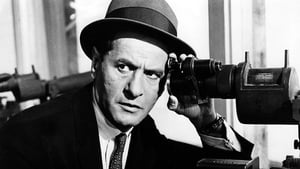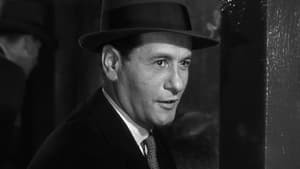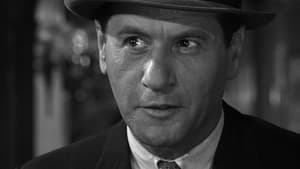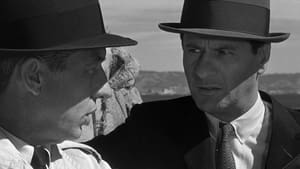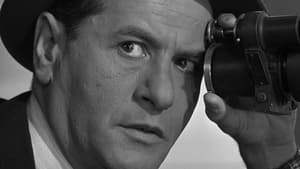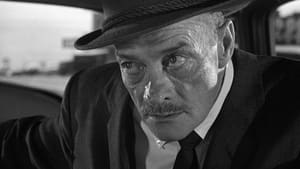Contact: info@alwanfilm.com
Video Sources 0 Views

Synopsis
Review: The Lineup 1958 Colorized – Rediscovering the Classic in Early Colored Glory

Introduction
The Lineup 1958 has long been celebrated as a noir gem of the late 1950s. However, what truly sets it apart now is its early colored version. In this article, we will explore the impact of colorization on the viewing experience of The Lineup 1958 and discuss its importance in the context of film history. While some purists may argue for the preservation of the original black and white format, the introduction of color offers a fresh perspective on this iconic film, inviting audiences to reevaluate its narrative and visual nuances.
Check The Full Colorized Movies List
Check Our Colorized Movies Trailer Channel
Understanding The Lineup 1958 Colorized: Director, Cast, and Genre
Directed by Don Siegel, The Lineup 1958 stands as a testament to his mastery of suspense and intrigue. The film boasts a stellar cast including Eli Wallach, Robert Keith, and Warner Anderson, each delivering performances that elevate the tension and drama of the storyline. Set against the backdrop of San Francisco, The Lineup 1958 seamlessly blends elements of crime thriller and police procedural, captivating audiences with its gritty portrayal of urban decay and moral ambiguity.
Exploring the World of The Lineup 1958 Colorized: Plot and Characters
The Lineup 1958 follows two hitmen, Dancer (Eli Wallach) and Julian (Robert Keith), as they carry out a series of violent crimes under the orders of a mysterious criminal mastermind. However, their plans are thwarted when a seemingly routine drug smuggling operation escalates into a deadly showdown with law enforcement. At the heart of the narrative is Detective Lieutenant Ben Guthrie (Warner Anderson), whose relentless pursuit of justice forces him to confront his own inner demons and moral compromises.
The Art of Film Colorization
Film colorization, the process of digitally adding color to black and white films, has been a subject of controversy since its inception. While some argue that it breathes new life into classic films, others contend that it compromises the integrity of the original artistic vision. However, advancements in technology have allowed for more subtle and nuanced colorization techniques, offering viewers a greater degree of authenticity and fidelity to the filmmaker’s intentions.
Early Colored Films: A Brief History
The concept of colorizing black and white films dates back to the early days of cinema, with filmmakers experimenting with hand-painted frames and tinting techniques to enhance the visual experience. However, it wasn’t until the advent of digital technology in the late 20th century that colorization became a widespread practice. Early pioneers such as Ted Turner sought to capitalize on this technology as a means of revitalizing classic films for modern audiences.
The Lineup 1958 and Its Early Colored Version
The decision to release The Lineup 1958 in a colorized format represents a bold and innovative approach to film preservation and restoration. By breathing new life into this timeless classic, audiences are given the opportunity to experience the film in a way that transcends the limitations of its original black and white presentation. Moreover, the early colored version of The Lineup 1958 serves as a testament to the enduring relevance and cultural significance of the film in the digital age.
The Debate Over Film Colorization
Despite its potential to enhance the viewing experience, film colorization remains a divisive issue within the film community. Critics argue that it undermines the artistic integrity of the original work, detracting from the director’s intended vision. However, proponents of colorization maintain that it offers a fresh perspective on classic films, introducing them to a new generation of audiences who may be less inclined to engage with black and white cinema.
Examining The Lineup 1958 as an Early Colored Film
In the case of The Lineup 1958, the early colored version serves to accentuate the film’s visual and thematic elements, enriching the viewer’s understanding of its narrative complexity. The vibrant hues of San Francisco’s cityscape contrast sharply with the film’s dark and foreboding tone, underscoring the dichotomy between law and lawlessness. Furthermore, the use of color enhances the emotional impact of key scenes, imbuing them with a sense of urgency and immediacy that resonates with contemporary audiences.
Influence and Legacy: The Lineup 1958 Colorized’s Impact on Cinema
The Lineup 1958’s enduring legacy extends far beyond its initial release, inspiring a new wave of crime thrillers and police procedurals in the years that followed. Its gritty portrayal of urban crime and corruption laid the groundwork for future classics such as Bullitt and Dirty Harry, while its nuanced exploration of morality and justice continues to inform the work of filmmakers today. Moreover, the film’s early colored version has sparked renewed interest in the noir genre, prompting audiences to revisit and reappraise its contributions to cinematic history.
Director’s Cinematic Legacy: Beyond The Lineup 1958 Colorized
Beyond The Lineup 1958, director Don Siegel’s cinematic legacy is a testament to his versatility and innovation as a filmmaker. From the gritty realism of Dirty Harry to the existential dread of Invasion of the Body Snatchers, Siegel’s films continue to captivate audiences with their bold storytelling and provocative themes. His uncompromising vision and distinctive style have left an indelible mark on the world of cinema, inspiring generations of filmmakers to push the boundaries of storytelling and visual expression.
Themes Explored in The Lineup 1958 Colorized
At its core, The Lineup 1958 is a meditation on the nature of darkness and morality in a world consumed by violence and corruption. Through its flawed yet sympathetic characters, the film explores themes of honor, loyalty, and redemption, challenging audiences to confront the moral ambiguity of the human condition. As the narrative unfolds, we are forced to reckon with the consequences of our actions and the choices that define us as individuals.
Reception and Controversy Surrounding The Lineup 1958 Colorized
Upon its release, The Lineup 1958 received critical acclaim for its taut direction, sharp screenplay, and powerhouse performances. However, the decision to release the film in a colorized format sparked controversy among purists who argued for the preservation of its original black and white presentation. Despite these concerns, the early colored version of The Lineup 1958 has garnered praise for its faithful recreation of the film’s visual aesthetic, offering viewers a fresh perspective on this timeless classic.
Where to Watch The Lineup 1958 Colorized Online
For those eager to experience The Lineup 1958 in all its early colored glory, the film is readily available on popular streaming platforms such as Amazon Prime Video and Netflix. Whether you’re a seasoned cinephile or a casual moviegoer, The Lineup 1958 offers a gripping and immersive viewing experience that is not to be missed.
FAQs About The Lineup 1958 Colorized
- Q: Is The Lineup 1958 available in its original black and white format?
- A: Yes, The Lineup 1958 is available in both its original black and white format and its early colored version, allowing viewers to choose the version that best suits their preferences.
- Q: How does the early colored version of The Lineup 1958 compare to the original black and white presentation?
- A: While the early colored version of The Lineup 1958 faithfully recreates the film’s visual aesthetic, some purists may prefer the stark contrast and shadowplay of the original black and white format.
- Q: What is the significance of The Lineup 1958 in the context of film history?
- A: The Lineup 1958 occupies a unique place in the annals of cinema, serving as a groundbreaking example of the crime thriller genre and a testament to the enduring power of storytelling.
Conclusion
In conclusion, The Lineup 1958 remains a timeless classic that continues to captivate audiences with its gripping narrative and compelling characters. Whether viewed in its original black and white format or its early colored version, the film stands as a testament to the enduring legacy of director Don Siegel and the contributions of its talented cast and crew. As we reflect on the impact of film colorization on the viewing experience, let us not lose sight of the artistic vision and thematic depth that define The Lineup 1958 as a true masterpiece of cinema.
